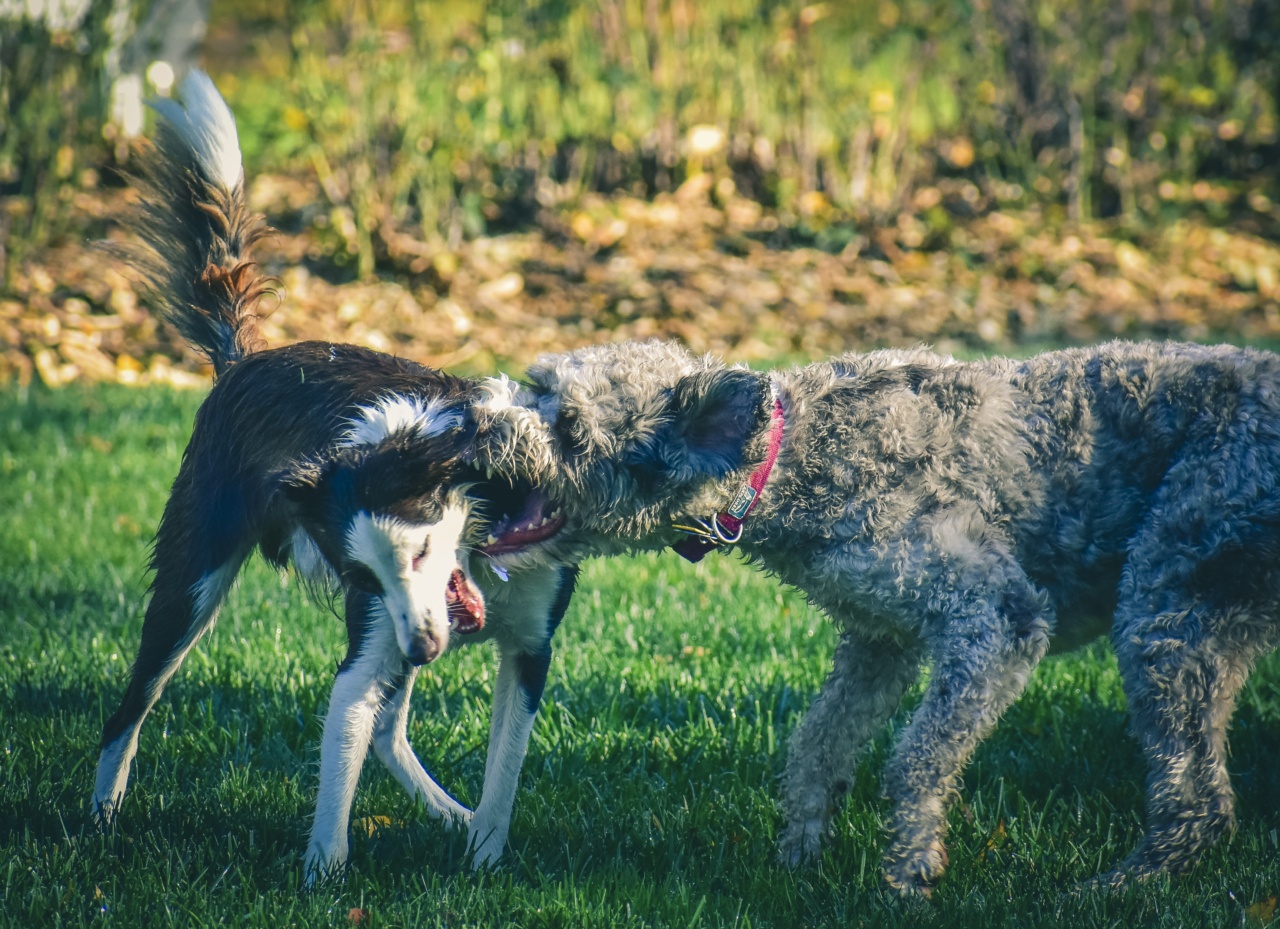Dogs are one of the most popular pets in the world. They are not just loyal companions, but they also serve as protectors and guardians of our homes. However, sometimes our dogs exhibit behaviors that we might interpret as aggressive instead of playful.
It can be difficult to determine whether our furry friends are being overly playful or showing signs of aggression. In this article, we will explore the various behavioral traits of dogs and highlight the differences between playful and aggressive behaviors.
What is Aggression in Dogs?
Aggression is a behavioral trait that can be exhibited by dogs under various circumstances. It can be the result of fear, anxiety, territorialism, or even pain.
Aggressive behaviors in dogs can range from growling, biting, and barking to snarling, lunging, and even attacking people or other animals. These behaviors can be extremely dangerous, and it is essential for owners to understand the causes of aggression in their pets.
Types of Aggression in Dogs
There are various types of aggression that dogs might display. These include:.
1. Territorial Aggression
Some dogs might become aggressive when they perceive that someone or something is invading their territory. They might bark, growl, and show their teeth to scare off trespassers.
Dogs can exhibit territorial aggression when they feel that their owners or family members are threatened.
2. Fear Aggression
Dogs can become aggressive when they are afraid of something or someone. Fear aggression can be triggered by loud noises, strangers, other animals, or even children.
Dogs that display fear aggression might cower, hide, or become aggressive to protect themselves or their owners.
3. Dominance Aggression
Dogs that exhibit dominance aggression believe that they are the alpha of their pack. They might show aggression to other dogs or people to establish their dominance.
Dominance aggression can be displayed as growling, snarling, or biting when the dog perceives that someone is challenging their authority.
4. Redirected Aggression
Redirected aggression is when a dog becomes aggressive towards someone or something that did not initially provoke them.
It occurs when a dog is agitated, excited, or aroused by one stimulus, and then redirects the aggression to something or someone else. This type of aggression can be dangerous as it can happen unexpectedly.
Playful Behaviors in Dogs
Playful behavior in dogs is an essential part of a dog’s life. Dogs love to play, and it is not uncommon to see them engage in playful activities with their owners or other dogs. Some of the common playful behaviors exhibited by dogs are:.
1. Tail-Wagging
When a dog wags its tail, it can mean that it is happy, excited, or playful. Dogs use their tails to communicate their emotions, and owners can often tell when their pets are feeling playful by observing their wagging tails.
2. Playful Chase
Playing chase is a common behavior exhibited by dogs when they want to play. They might run after their owners or other dogs, bark, and jump around to show their excitement.
Playing chase is an excellent way for dogs to burn off excess energy, and it can be a fun activity for both dogs and their owners.
3. Playful Biting
When a dog nips or bites gently, it can be a playful behavior. This behavior is often displayed during puppyhood when puppies are learning to play with their littermates.
However, adult dogs might also exhibit playful biting as a way to initiate play or show affection.
4. Playing with Toys
Dogs love toys, and they will often engage in playful activities with their favorite toys. They might chew, fetch, or tug at their toys to show their excitement and playfulness.
Playing with toys is an excellent way for dogs to exercise their minds and bodies.
How to Determine Whether Your Dog’s Behavior is Aggressive or Playful
Determining whether your dog’s behavior is aggressive or playful can be a challenging task. However, there are certain signs that you can look out for to help you distinguish between the two. These signs include:.
1. Body Language
Dogs use their bodies to communicate their emotions. When a dog is playing, it will often have a relaxed body posture. It might wag its tail, jump around, and playfully nip. On the other hand, aggressive dogs will have stiff body postures.
They might growl, snarl, or bare their teeth to show their aggression.
2. Context
The context of your dog’s behavior can be a useful indicator of whether they are being playful or aggressive. If your dog is playing with you or other dogs in a familiar environment, it is likely that they are being playful.
However, if they are barking and growling at strangers or other dogs, it might be a sign of aggression.
3. Tone of Voice
Dogs are sensitive to the tone of voice used by their owners. If you are using a playful and excited tone of voice, your dog is likely to respond in a playful manner.
However, if you are using a harsh, scolding tone, your dog might perceive it as a sign of aggression.
4. Consistency of Behavior
Consistency of behavior is another essential factor in determining whether your dog’s behavior is aggressive or playful. If your dog displays playful behaviors consistently, it is likely that they are being playful.
However, if they exhibit aggressive behaviors repeatedly, it might be a sign of an underlying issue that needs to be addressed.
Conclusion
Dogs are social animals that love to play. However, sometimes their playfulness can be misinterpreted as aggression.
As owners, it is essential to understand the various types of aggression that dogs might display and how to distinguish between playful and aggressive behaviors. By understanding our furry friends’ body language, context, tone of voice, and consistency of behavior, we can ensure that our pets are living happy, healthy, and playful lives.






























